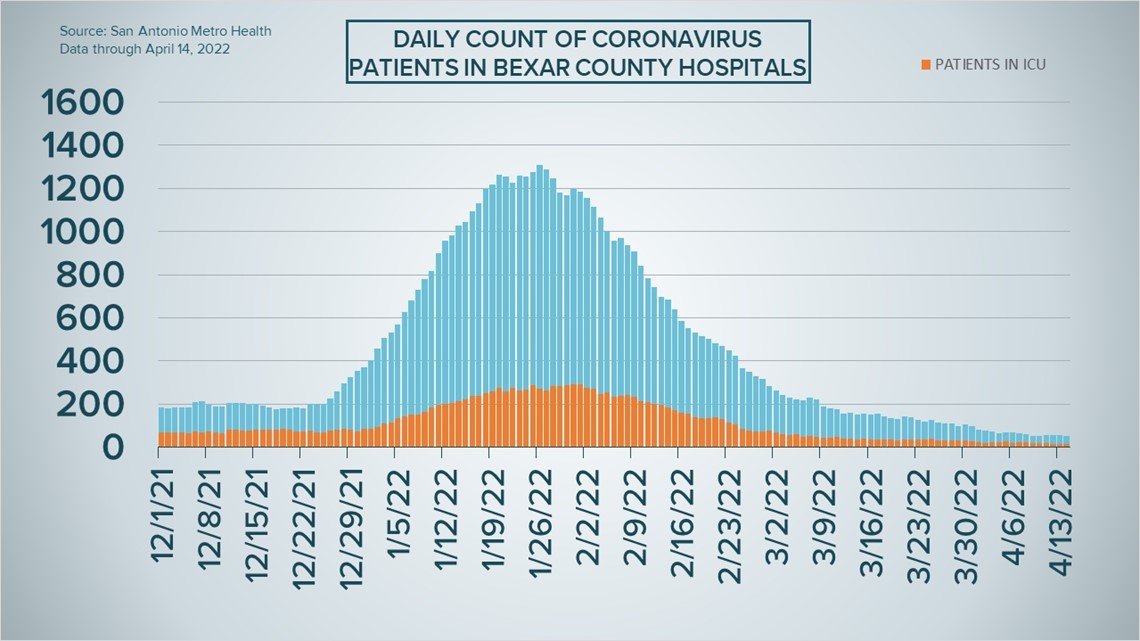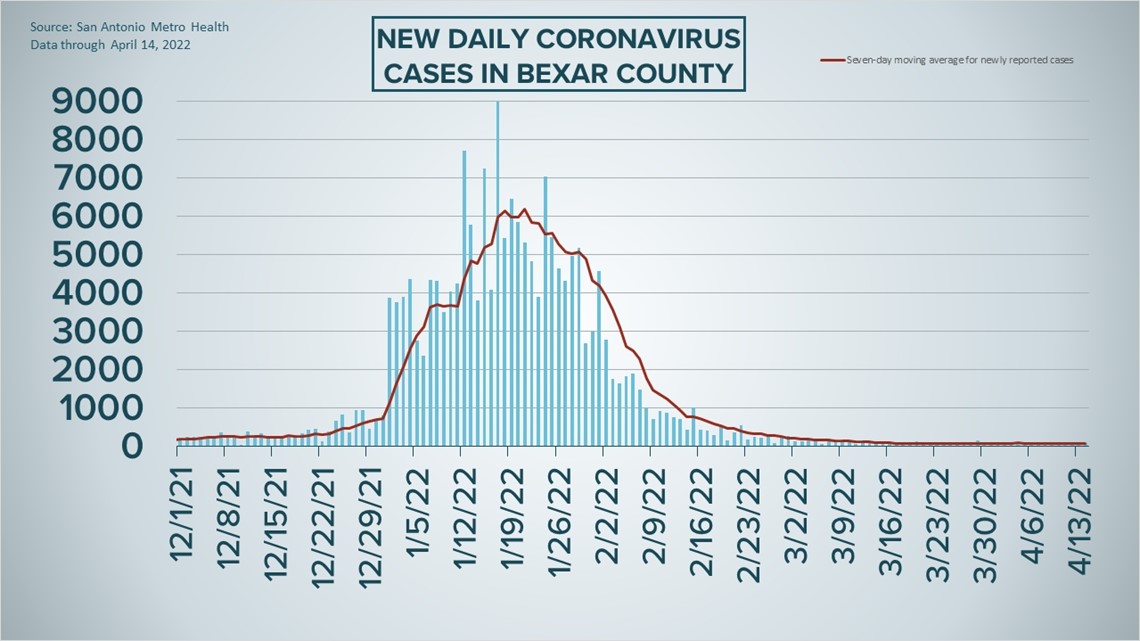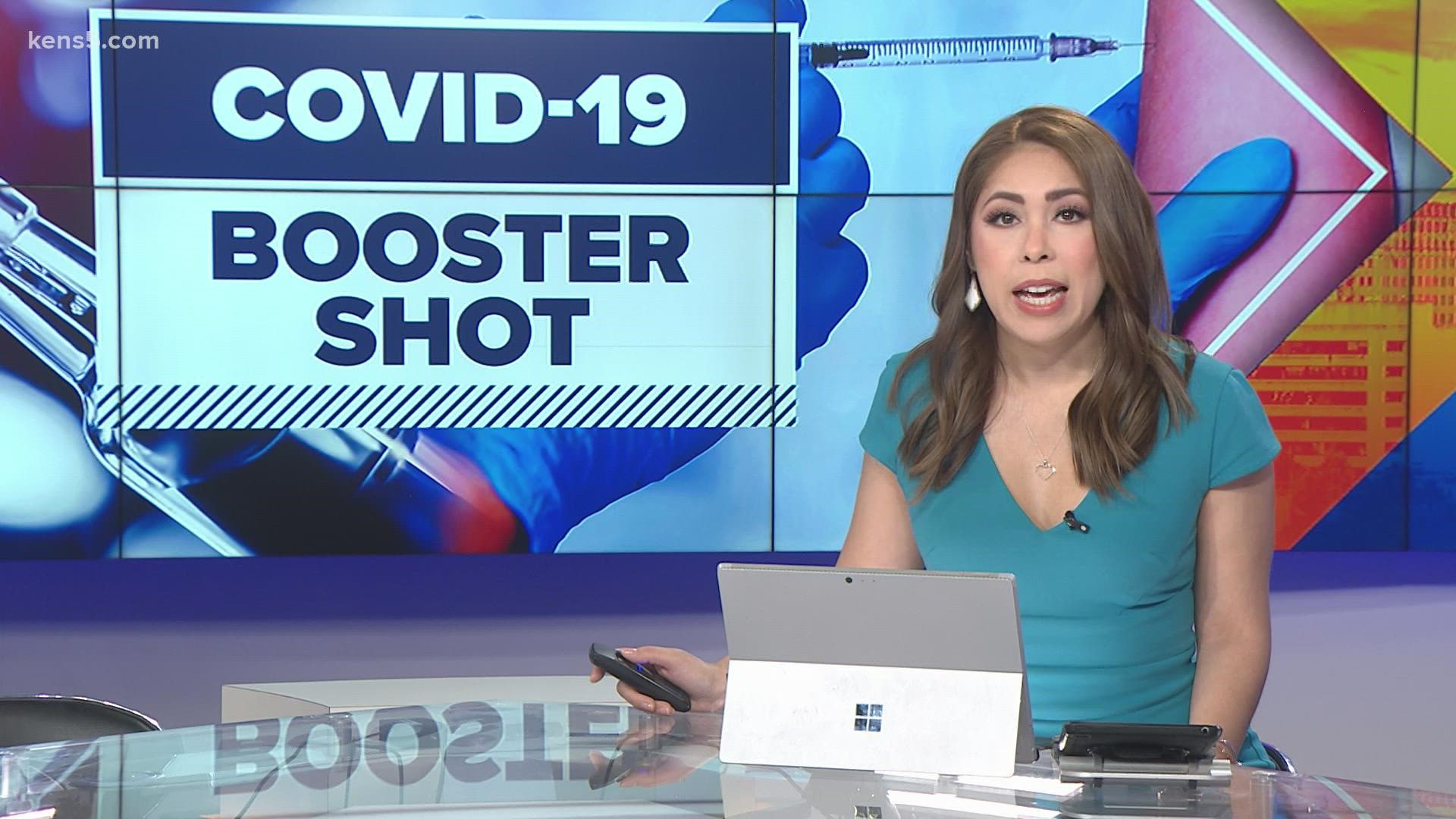SAN ANTONIO — COVID-19 numbers for the San Antonio area remain low as the country cautiously continues returning to pre-pandemic life while staving off a spring surge.
Bexar County health authorities reported 82 new infections Thursday, which, while higher than any single-day total over the last week, is still a drastically lower case count than the community saw in the first weeks of 2022, when omicron had Texas in its grip. The seven-day case average dropped slightly, from 72 to 71.
The number of local patients hospitalized with the coronavirus also dropped on Thursday, though the figure has fluctuated between 52 and 64 over the last week. Of the 57 Bexar County residents hospitalized on Thursday, 14 are in intensive care and 10 are using ventilators.
For the third day in a row, no additional virus-related deaths were reported in the community. About 535,500 county residents have been diagnosed with COVID-19 since the pandemic began.
How Bexar County is trending




Vaccine Progress in Bexar County
The following numbers are provided by San Antonio Metro Health. A full breakdown can be found here.
- 1.438 million eligible Bexar County residents are fully vaccinated as of Monday, April 4.
- More than 496,000 eligible Bexar County residents have received their COVID-19 booster shot, as of Monday, April 4.
The CDC states that "when a high percentage of the community is immune to a disease (through vaccination and/or prior illness)," that community will have reached herd immunity, "making the spread of this disease from person to person unlikely."
The City of San Antonio breaks down the vaccination rates by zip code on Metro Health's Vaccination Statistics page.
Coronavirus in Texas
The total number of coronavirus cases in the state since the pandemic began grew by 2,459 on Thursday, according to the Texas Department of State Health Services. That total includes 1,023 new confirmed cases and 1,436 new probable cases. More details can be found on this page.
Thursday's figures bring the total number of Texans diagnosed with COVID-19 to more than 6.7 million.
An additional 18 Texans have died from virus complications, meanwhile, raising the statewide death toll to 86,327.
Coronavirus symptoms
The symptoms of coronavirus can be similar to the flu or a bad cold. Symptoms include fever or chills, cough, shortness of breath or difficulty breathing, fatigue, muscle or body aches, headache, new loss of taste or smell sore throat, congestion or runny nose, nausea or vomiting, and diarrhea, according to the Centers for Disease Control.
Most healthy people will have mild symptoms. A study of more than 72,000 patients by the Centers for Disease Control in China showed 80 percent of the cases there were mild.
But infections can cause pneumonia, severe acute respiratory syndrome, kidney failure, and even death, according to the World Health Organization. Older people with underlying health conditions are most at risk.
Experts determined there was consistent evidence these conditions increase a person's risk, regardless of age:
- Chronic kidney disease
- COPD (chronic obstructive pulmonary disease)
- Obesity (BMI of 30 or higher)
- Immunocompromised state (weakened immune system) from solid organ transplant
- Serious heart conditions, such as heart failure, coronary artery disease, or cardiomyopathies
- Sickle cell disease
- Type 2 diabetes
- The CDC believes symptoms may appear anywhere from two to 14 days after being exposed.
Human coronaviruses are usually spread...
- Between people who are in close contact with one another (within about 6 feet).
- Through respiratory droplets produced when an infected person coughs, sneezes or talks. These droplets can land in the mouths or noses of people who are nearby or possibly be inhaled into the lungs.
- Some recent studies have suggested that COVID-19 may be spread by people who are not showing symptoms.
Help stop the spread of coronavirus
- Stay home when you are sick.
- Eat and sleep separately from your family members
- Use different utensils and dishes
- Cover your cough or sneeze with your arm, not your hand.
- If you use a tissue, throw it in the trash.
Find a Testing Location
City officials recommend getting a COVID-19 test if you experience fever or chills, cough, shortness of breath or difficulty breathing, fatigue, muscle or body aches, headache, new loss of taste or smell, sore throat, congestion or runny nose, nausea or vomiting, or diarrhea.
Here's a Testing Sites Locator to help you find the testing location closest to you in San Antonio.
Latest Coronavirus Headlines
- Homeschooling surge continues despite schools reopening
- 2021 recorded as deadliest year in US history
- CDC extends travel mask requirement to May 3 as COVID rises
- Pfizer to seek COVID booster for healthy 5- to 11-year-olds
- A million empty spaces: Chronicling COVID's ruthless US toll
- US orders consular staff to leave locked-down Shanghai amid COVID outbreak
- Research shows some Texas Latinos have doubts about effectiveness of COVID-19 vaccines

